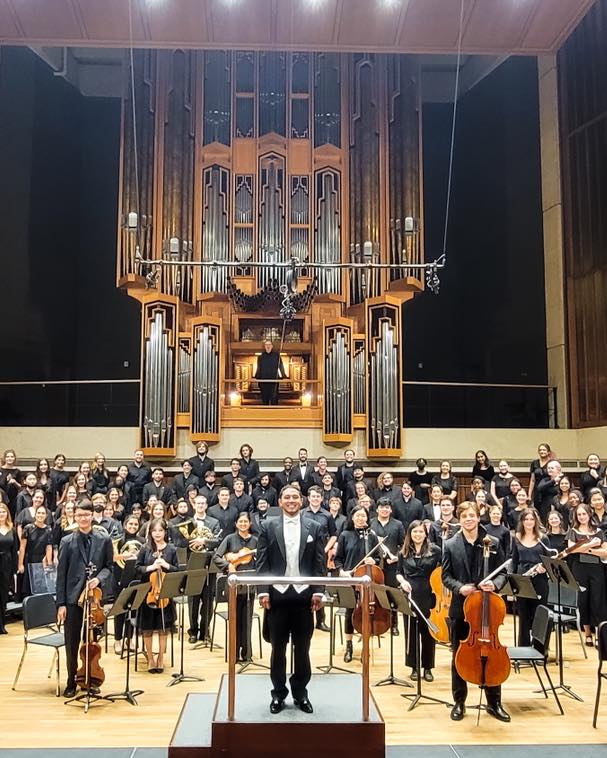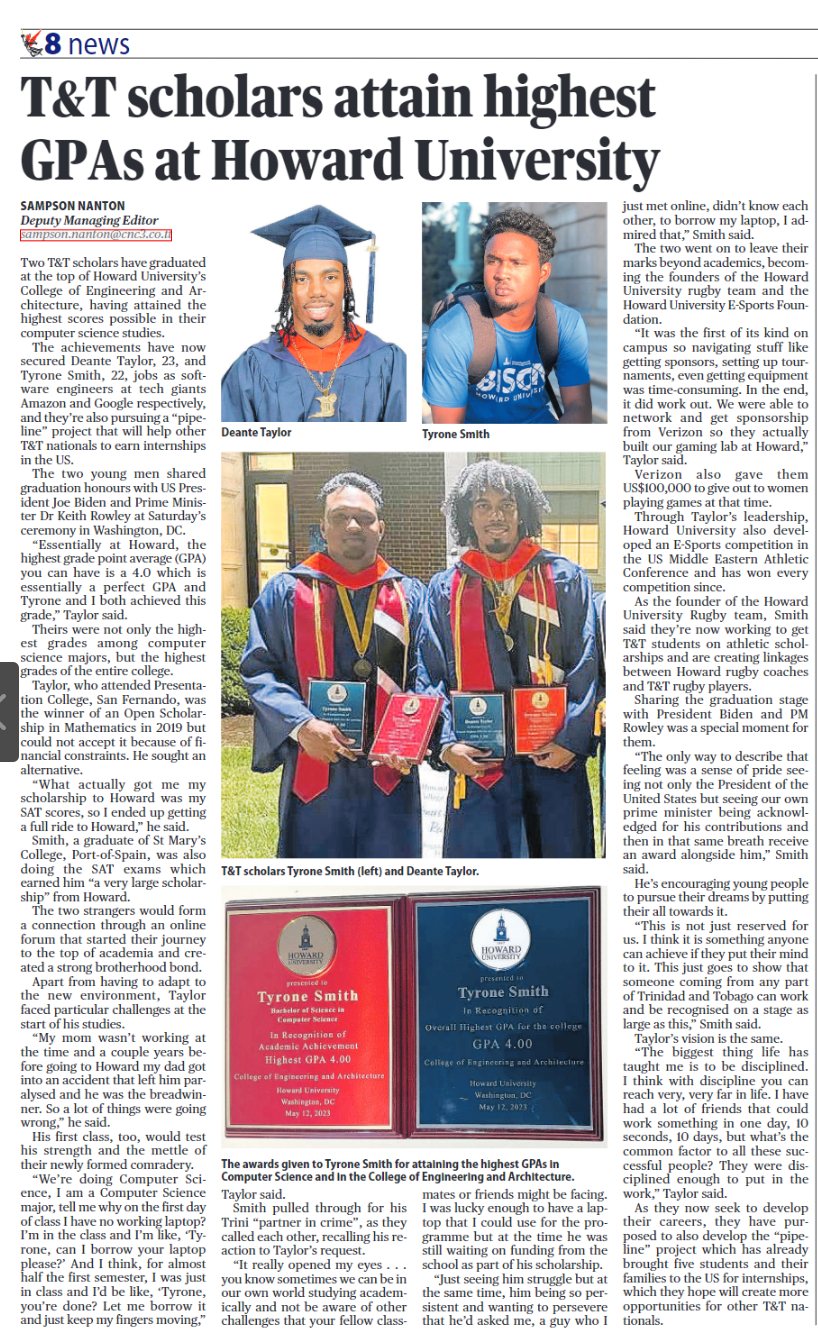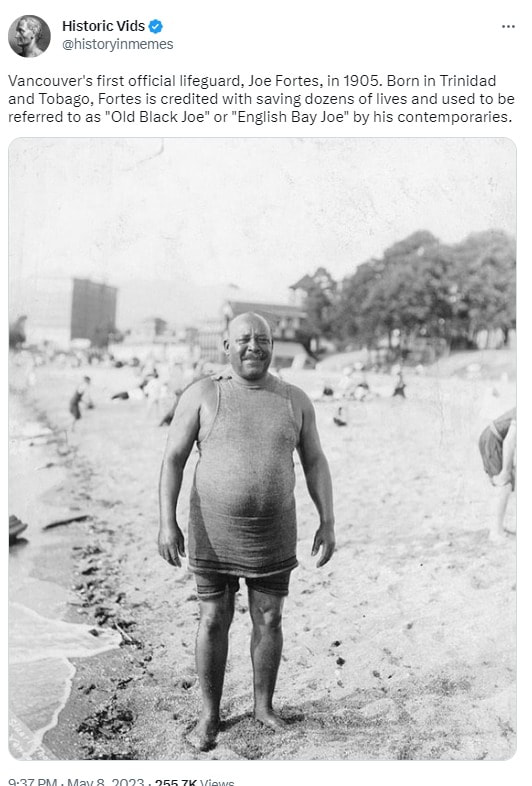|
We are excited to welcome Dr. Nathan Nagir to Wright State University as the new Director of Choral Studies at WSU School of Music starting this fall. Nagir will be conducting the Collegiate Chorale, Men’s Chorale, and teaching choral methods and conducting.
Dr. Nagir comes from the twin isles Republic of Trinidad and Tobago in the Caribbean. There, he is in demand as a conductor, accompanist, vocalist and educator. Having worked with several children’s, youth and adult ensembles, he has led many of them to success in competitions throughout the nation. He has worked with many primary and secondary schools, accompanied and directed the St. Augustine Girls’ High School choir and formed the student-staff/faculty choir at Hillview College. He served as the National Music Director and Conductor in 2012 for the National Convention of the Presbyterian Church of Trinidad and Tobago. As a solo artist, Nathan has won several prizes and competitions for best vocal and choral performance. His personal choir – Harmonies Aloud – was selected to perform for various state functions and several times at the Diplomatic Centre and Office of the Prime Minister. In the Spring of ’22 Nagir graduated from the Butler School of Music at The University of Texas at Austin where he earned the Doctor of Musical Arts degree in Choral Conducting under the instruction of Drs. James Morrow and Suzanne Pence. While at the Butler School of Music, he served as: • Conductor to University Chorus & Tenor-Bass Chorus • Associate Conductor to Chamber Singers & Concert Chorale • Music Director to The Bach Cantata Project & Longhorn Singers (Premiere Show Choir at UT) He holds a Master of Music in Choral Conducting from Texas State University and a Certificate of Music in Steelpan and Bachelor of Arts in Musical Arts from the University of the West Indies. Welcome, Dr. Nathan Nagir! Wright State University College of Liberal Arts Ginger Thomas Minneman Dan Zehringer Hank Dahlman James Wilson Tipps
0 Comments
A US-based Trinidadian is disrupting the beverage industry with a universal non-alcoholic mixer influenced by one of his grandfather’s recipes. Zurena offers a portfolio of simple and versatile Caribbean drink mixes made with lemons, limes, passion fruit, mango, and Caribbean spices. Packaged in a 750ML bottle, the all-natural, sodium-free, gluten-free, and fat-free mixes come in two flavors: Tropical and Ginger, each with 15 grams of sugar per serving.
Founder and owner Nigel Smith describes the product as “magic,” as it can be added to any dark or white spirit, beer, wine, bubbly, club soda, juice, or tea to create high-quality Caribbean cocktails in seconds, without the need for professional mixology skills. Tasting Panel Magazine gave Zurena 89 points, making it the first non-alcoholic mixer to be graded by the magazine. Zurena is more than just a drink to Smith; it is about “Uplifting Spirits,” a term he has trademarked. As a sponsor at Audi Fields, Smith infuses Caribbean aesthetics into his marketing, with a campaign called Lucky Row, where groups of people are selected and given fedora hats, sunglasses, and mocktails made with Zurena, and encouraged to dance to soca music. Smith is also honoring the legacy of his grandfather, Carlton Smith, a bartender and mixologist who entrusted secret recipes to his children and grandchildren. Zurena is available in bars and retailers in Washington DC, Maryland, Texas, and Grenada, and Smith is looking to expand to other Caribbean markets. (Source: The Caribbean Camera, March 21, 2023) Many Trinidadians know the elements of a good river lime with the river, of course, being central to that.
Trinidad and Tobago artist Che Lovelace’s latest exhibition, Che Lovelace: Bathers, takes an expository look at bodies of water and TT people’s interaction with it. It will run from March 9-April 15 at the Nicola Vassell Gallery, Tenth Avenue, New York. Lovelace’s 14-piece exhibition carries titles such as Worshippers, showing figures dressed in Baptist-like clothing holding hands in a river. Another is called River Scene which shows bodies involved in different activities in the water. Other pieces are titled after popular activities done by water and/or popular bodies of water such as Beach Dancers, Covigne Pool and Large Broadwalk Bathers. Many of them are done with acrylic and dry pigment. A bio about Lovelace on the gallery’s website says he is “an unabashed painter of the flora, fauna, figures, landscapes and rituals of the Caribbean.” “Lovelace likens his material and formal interventions–such as cleaving the canvas into quadrants and dissecting the picture plane into cubist constituents–to exploring Caribbean selfhood as an integration of antecedents and transforming simplicity into wonder.” A press release about the exhibition said, “Meditating on famed depictions of bathers throughout the art historical canon, Lovelace was particularly fascinated by artists who were lesser known for the subject. One such, Edvard Munch, rendered bathers with energy and vitalism, a philosophy germinated from Aristotelian times that emphasised the vital forces of nature and good health. Framing this immemorial trope in the specificity of his own culture, Lovelace celebrates the bather as an intrinsic figure of the Trinidadian vernacular.” On his Facebook page Lovelace said, “Very, very excited! My first full-scale New York gallery exhibition opens one week from now on Thursday 9th March at the Nicola Vassell Gallery in Chelsea. “The exhibition brings together paintings, some of which I’ve been working on for several years, all focused around the body and water. “Our relationship with water…the sea, rivers etc. here in the Caribbean is a complex one, and I have tried to translate through my own experiences what that relationship feels and looks like.” The gallery described the exhibition as a “series of paintings chronicling the artist’s exploration of the body in and around water.” It added, “With an expressionistic hand, Lovelace weaves stories of life, freedom, and post-colonialism in his native Trinidad, into a tapestry of abstracted landscapes, still lifes, and portraits.” Lovelace began working with Jamaican-born gallerist Nicola Vassell in 2021. Vassell opened the gallery in 2021 but has worked in the art world for about two decades. In 2021, his work was shown at the Independent Art Fair in New York and there Vassell became aware of his work. Vassell approached him about working together and, from there, the working relationship grew. “It has grown to this point where we are now doing my first solo exhibition collaborating with the gallery. We did go to Miami Art Basel in December which went quite well and was a success. It was my first time at Art Basel as well. So I also went with her gallery to that art fair.” Growing up in TT and the Caribbean, water is “ever present,” he said. There is a whole culture around water and people’s interaction with it, Lovelace said. Water paints a vivid picture of Lovelace’s own life. “Over the last few years I have been working in the Chaguaramas area and I see a lot of people who come, specifically, to be close to water. I, myself grew up in Matura and I am also a surfer,” he said. It was always something he wanted to address and had already done paintings showing people close to water, bathers or someone on a beach. He thought he could expand on these and turn it into a full-themed set of paintings. In its bio, the gallery says it “is a contemporary art gallery committed to discourse that widens the lens of the history and future of art. Its focus is on developing an inter-generational, cross-disciplinary program of international artists and thinkers.” This speaks to and fits well with Lovelace’s view of himself as an artist. “I am placed within the lens of art that is a little broader than the main centres. I am working in what would have been a traditionally peripheral space, a space in the Caribbean where we are still developing our own infrastructures around art. “But we do have a lot of artists, a lot of creative people, we make a lot of things and we are a creative people. I see this as an opportunity to join with and collaborate with someone who is working in a centre, like New York, but who understands the value of what is being made and the discussions being had, the energy that is being put out outside of those centres but which contribute, generally, to the movement of where art is going.” This exhibition is a proud moment for Lovelace and he sees it as a pathway to expanding the reach and practice of local and regional artists and their art. (Source: Newsday, March 8, 2023) Dr Diva Amon and Professor Judith Gobin For the first time, a deep-sea species has been named after a marine scientist from Trinidad and Tobago. The new named species of tubeworm, Lamellibrachia judigobini, has been named in honour of Caribbean marine ecologist, Professor Judith Gobin, Professor of Marine Biology at the St Augustine Campus of The University of the West Indies (The UWI). The international team of scientists, led by Dr Magdalena Georgieva of the Natural History Museum in London, UK, and which included local marine biologist, Dr Diva Amon, chose to celebrate Professor Gobin for her many important contributions to marine science. In addition, she is the first woman to hold this prestigious position in the Faculty of Science and Technology. “We loved the idea of naming this very special deep-sea tubeworm after Judi, to honour her many contributions to revealing and protecting the marine life of the Caribbean and beyond. She is a key member of the deep-sea research community and I hope this discovery inspires plenty more in the deep oceans of the region,” said Georgeiva. The Lamellibrachia judigobini tubeworm is known to inhabit deep-sea cold seeps and hydrothermal vents stretching from Trinidad and Tobago and Barbados to the Gulf of Mexico at depths from 964 to 3304 metres. It is possibly also present at the Kick‘em Jenny submarine volcano off the island of Grenada. Lamellibrachia judigobini, was named in honour of Caribbean marine ecologist, Professor Judith Gobin, Professor of Marine Biology at the St Augustine Campus of The University of the West Indies. “Trinidad and Tobago is in a crucial location to explore one of the biologically richest regions, the Caribbean basin. We expect there to be many more species still unknown to humanity”, said Nadezhda N. Rimskaya-Korsakova, a scientist from Lomonosov Moscow State University who co-led the study.
The new species, which can grow to over one metre long, was collected by Remotely Operated Vehicle during several deep-sea exploratory missions stretching from 2012 to 2014. These are areas where fluids rich in hydrogen sulfide and methane leak from the seafloor. This fluid provides the energy to sustain large communities of life in the harsh conditions that exist in the deep sea (no light, approximately 4°C temperature, and more than 100 atmospheres of pressure). At cold seeps, bacteria create food via chemosynthesis in the absence of light, using the chemicals in the fluid, in a similar way to plants, which use sunlight for photosynthesis. These tubeworms do not have a gut or mouth and instead host these bacteria within them providing food directly. They are also keystone species, forming forests that then provide habitat for other species living at the seeps. “There is so much we don’t know about the waters around Trinidad and Tobago. Perhaps one day these tubeworms will be as iconic as our hummingbirds or the leatherback turtle," added Dr Amon, a director and founder of SpeSeas. "Not only are we fortunate to have an amazing diversity of life on land and in shallow waters here in Trinidad and Tobago but also down in the deep sea.” She notes that she continues to collaborate with Prof. Gobin on several other deep-sea projects. Reached for comment, Professor Gobin said: “This must surely be a crowning point of my extensive marine career and I am truly honoured. I sincerely thank the authors.” It is her hope that deep-sea science will continue to grow in Trinidad and Tobago. (Source: The Loop, March 23, 2023) NOW Morning ShowTalented Trinidadian actress, Khadija Glasgow-Speer, continues to make waves internationally, as she concluded 2022 co-starring alongside popular American actor, Morris Chestnut, in veteran director, Malcolm D Lee’s, “The Best Man: Final Chapters.” Find out all about it as Khadija chats with Natasha about her experience.  rinidadian author Anthony Joseph has won the TS Eliot prize for his collection Sonnets for Albert. Joseph won the £25,000 poetry prize for his work which is described as an autobiographical collection that weighs the impact of growing up with a largely absent father. Born in Trinidad and Tobago, Joseph migrated to the United Kingdom in 1989 at the age of 21.He lived with his grandparents and loved music and poetry from young. He told Loop News in an earlier interview that he grew up in an environment that taught him in order to succeed he had to go away. In addition to producing five poetry collections, Joseph has authored three novels among them Kitch: A Fictional Biography of a Calypso Icon, which was shortlisted for the Republic of Consciousness prize and the Royal Society of Literature’s Encore award and was longlisted for the 2019 OCM Bocas prize for Caribbean literature. He is also a musician and had eight critically acclaimed albums to his credit. Joseph is the second Trinidadian to win the lucrative prize. In 2020 dub poet Roger Robinson won the prize. He was on the panel of judges which included Chair of judges Jean Sprackland, and 2021 Costa book of the year winner Hannah Lowe. The judges said each of the shortlisted books “spoke powerfully to us in its own distinctive voice”. Sprackland said: “From this strong field our choice is Sonnets for Albert, a luminous collection which celebrates humanity in all its contradictions and breathes new life into this enduring form." This year saw a record 201 submissions. (Source; The Loop, Jan 18, 2023) This story is being reposted as author credit was previousy omitted. In 1988, Trinidad-born Andrew Madan Ramroop became the first man of colour to own a business in London's prestigious Savile Row. The achievement came 18 years after he had migrated to England from his home at Maingot Road, Tunapuna, where he was born on November 10th, 1952. In 1970, Ramroop left Trinidad aboard the luxury liner Northern Star and headed to England with hopes of beginning a career as a tailor's apprentice. He, however, was turned down for many jobs on Savile Row. "In those early days, my accent wasn't what it is now and I was applying for jobs to be at the front of the shop to cut and to fit and to meet clients," Ramroop told the BBC. "People wanted to protect their own businesses and they were being realistic in saying this guy won't suit the front of the shop," he said gratiously. Ramroop began his London training as a backroom trainee for a Savile Row institution, Huntsman & Son. In 1974, he found a position as an assistant cutter with Maurice Sedwell—the only shop on Savile Row that would hire a non-white tailor. Ramroop mastered his craft, and worked his way to the top, becoming managing director of the business in 1982 and then buying the company in 1988. In the early days, Ramroop was confined to making alterations. The big break came when a client personally asked for him to oversee an entire fitting. Ramroop's reputation was soon sealed through personal recommendations - and at one point he was dressing half a dozen British cabinet ministers. Famously, he also designed the cashmere jacket worn by Princess Diana in her infamous 'Panorama' interview on British television. Over the years, Sedwell sold Ramroop shares in the business, until he had accumulated 45%. The crunch time came in 1988 when Ramroop wanted to leave to set up his own business. Sedwell eventually persuaded him to stay and sold him a further 45% in the business. Eight years after taking over the business, Ramroop expanded the premises from 500 to 3,000 square feet. Located on London’s Fleet Street, Maurice Sedwell Ltd. grew from a gold medal-winning tailor shop to one of the UK’s best known names in Bespoke Tailoring. Today, he owns and runs Maurice Sedwell on 19 Savile Row, making bespoke suits for customers around the world. Ramroop has been featured in a BBC 2 documentary on Black Firsts. He has been named by 'Complex' as one of Britain's Greatest Designers. Among other accolades, Ramroop was the first tailor to be awarded a professorship at the London College of Fashion for distinction in his field in 2001 and, in 2005, was awarded the Chaconia Medal Gold by the Government of Trinidad and Tobago. In 2008, the Master Tailor founded the Savile Row Academy (SRA) to train the tailors of tomorrow, and was also handed an OBE honour from Britain's Queen Elizabeth II. (Source: Dominic Kalipersad, Nov. 6, 2019) Turn your devices to ITV and tune in to this year’s edition of Voice UK and, at some point, the sound coming from it will be familiar.
It's soca from Rodell “Triniboi Joocie” Sorzano. The 33-year-old, UK-based Trinidadian is a semifinalist in the 11th season of the long-running show the Voice UK, which began in 2012. He will deliver his semifinal performance on Saturday. This year’s judges are Will.i.am., Anne Marie, Sir Tom Jones and Olly Murs. Triniboi Joocie's journey to being the first soca artiste on the show began 12 months ago. However, he is not the first to perform in such international shows. In 2018, Olatunji Yearwood competed in the UK’s X Factor. Other Trinidadian, non-soca artistes have also competed in these types of shows. Earlier this year, 16-year-old Camryn Champion secured a spot on American Idol. Triniboi Joocie said, “The competition decided to contact me. The talent scout for the show reached out twice, actually. The first occasion they contacted me, I declined. I said, ‘No. These shows don’t really represent artistes that I regard as artistes. I think it is quite manufactured.’ “Then they contacted me again and assured me that they were interested in me as an artiste and what I bring to their platform. Basically. I guess, they were changing their whole scope on the show and how it is represented.” There were multiple auditions before he reached the live stage with the blind auditions. “It was just a very nerve-racking, exciting experience. But I was reassured I could be as true to who I am and they appreciated that.” He first appeared on episode five, which aired on October 1. At the audition, he was asked to sing four songs. “I came in, sang, and they were like, ‘Yes! Yes! Triniboi, we love this.’” After multiple meetings and more auditions, he progressed to blind auditions. At the October 1 blind audition, he sang his 2020 song Bottle Over Head, which saw British singer/songwriter and judge Anne Marie turning around quickly. “I was the first act on the second day of auditions. At 6 am in the morning, I gave them authentic soca,” he said. He then progressed to the callbacks, at which he did a Trinidadian-style version of Ed Sheeran and Justin Bieber’s I Don’t Care. It is important for Triniboi Joocie to be anauthentic soca artiste on this platform because, for him, he feels the soca that has made it to the charts previously has either been diluted or had different elements added to it. Being on shows like these is also opening people’s minds more to soca and its many possibilities, he said. It was making people more receptive to the indigenous genre being played throughout the year, as opposed to only at Carnival time. During the callbacks, Triniboi Joocie was sent a song two days in advance and then had to make it his own. “And I asked them, 'How far can I take the song?' and they said, 'Listen, 'juice' it. Make it Joocie. Give us Triniboi.' And I said, ‘Yuh sure? Because I will take it out of that box and approach it like a Soca Monarch performance, basically.’ “And they said, ‘Yes. Do you.’” He said that was when he was able to stand out from the other competitors. He thinks because soca is such a new genre, to some, it might be difficult to describe. “What Anne-Marie said is, 'Triniboi is fun.' They are associating my performance as fun. It is happy. "But really I want them to understand there is craft. There are depths to this. There are layers.” He believes moving to the UK in 1998 allowed him to immerse himself more in TT’s culture because he was away from it. He grew up in Laventille before moving to the UK. He is also a science teacher. That is why he is a Notting Hill Carnival ambassador. He has been advocating for soca in Europe for over a decade, an earlier press release about his entry to the show said. He was also the UK’s Soca Monarch in 2012 and 2013. In June, Triniboi Joocie performed the late Lord Kitchener’s Pan in A Minor, backed by a 100-piece pan ensemble, at the Queen’s Platinum Jubilee celebration at Buckingham Palace. No matter the outcome of Voice UK, Triniboi Joocie intends to give it his best for soca, TT and the region. Using a cake analogy, he said this was simply one of the many "flavours" he was adding to his career, as the bowl was still mixing. Another press release said his decision to take part in the show was an intentional move to advance his career as well as showcase the culture of TT and the Caribbean. Triniboi Joocie also thinks once people take the music seriously, it will be recognised. “Often enough, we are afraid to be as authentic as we should be. To make it palatable, we water it down.” Afrobeats is now mainstream music because its artistes stuck to the roots of their music and were unified, he said. He said if soca is constantly changed it would not have an identity or a recognised factor that would make people say, “That is soca.” He called on soca artistes to be more confident in what they do. The message that Triniboi Joocie wants the world to take away from his appearing in Voice UK is that soca is not only about fun, it is the song of a people and place that are underrepresented in the mainstream industry, and it, too, needs its day in the sun. (Source: Newsday, Oct 21, 2022) |
T&T news blogThe intent of this blog is to bring some news from home and other fun items. If you enjoy what you read, please leave us a comment.. Archives
July 2025
Categories
All
|













 RSS Feed
RSS Feed